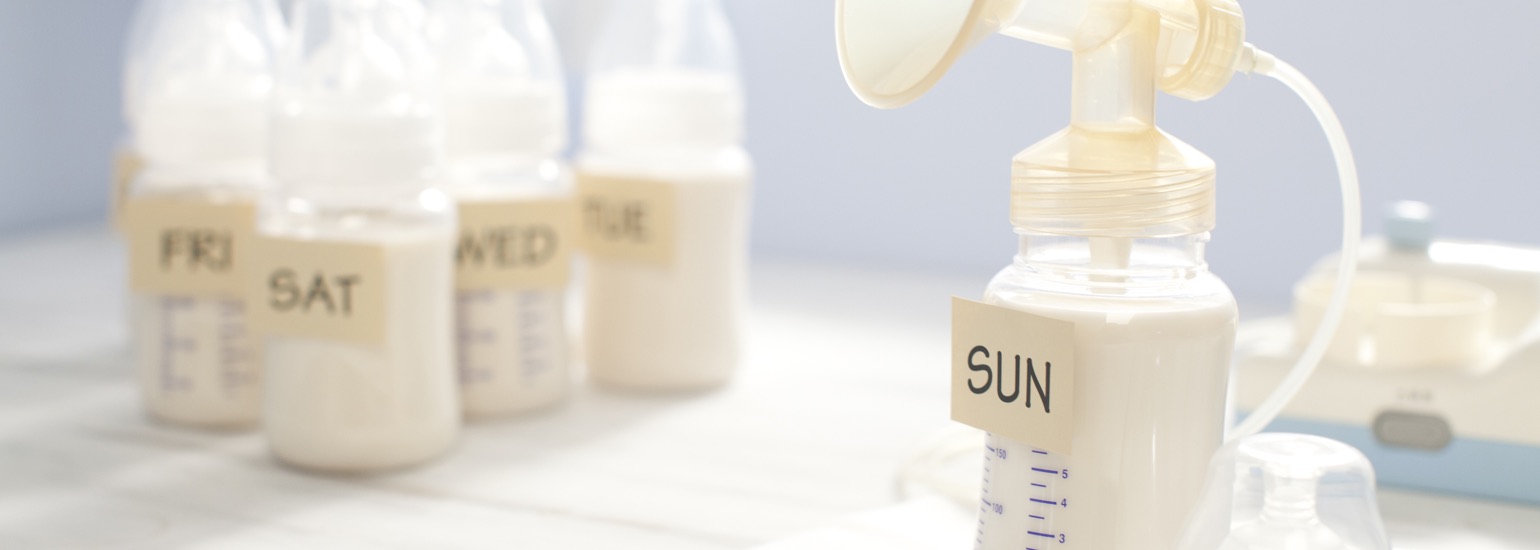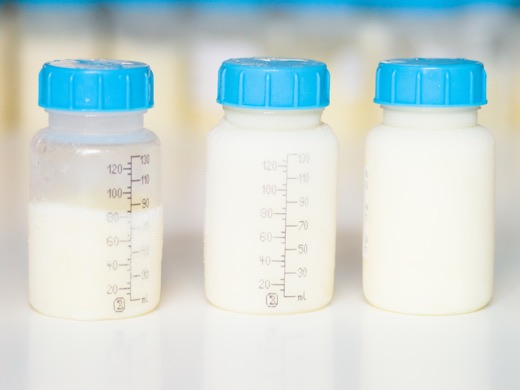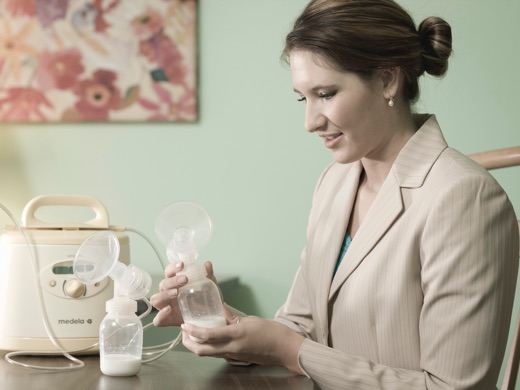How do I pump enough for storing?
It may feel overwhelming to think about how to store breastmilk while also feeding your baby. We’ve got a great strategy.
- Nurse your baby in the morning and then pump both breasts afterward for about 15 minutes.
- When feeding later in the day, have someone else offer your baby an ounce or two of pumped milk while you pump again for about 15 minutes.
- When you are done pumping, offer your baby your breast.
- Add any extra pumped milk to your freezer supply.
Your breasts will get used to this routine within a few days, and there will be plenty of milk for both the baby and your freezer supply.
How can I boost my pumping output?
Because milk is made on a supply-and-demand basis, the best way to make more milk is to take more milk out. Any breastfeeding or pumping you add to your day will help boost your supply.
What is “power pumping?”
Power pumping is a technique that imitates a baby who is cluster feeding.
To power pump:
- Pump both breasts with your electric pump for 20 minutes.
- Take a break for 10 minutes.
- Pump again for 10 minutes.
- Break for 10 minutes.
- End your session by pumping again for 10 minutes.
This is a total of one hour of on-and-off pumping and can help boost your supply.
Do lactation cookies help?
While some foods are commonly believed to increase your milk supply, evidence shows that they may only have a very small impact. The most proven way to increase your supply is by breastfeeding or expressing breastmilk more often.
What about herbal supplements?
There are several supplements that may have a small impact on your milk supply. However, depending on your medical history, some of these herbs may reduce your supply instead of boosting it. Talk to your doctor and a lactation consultant before taking any herbal supplements.




